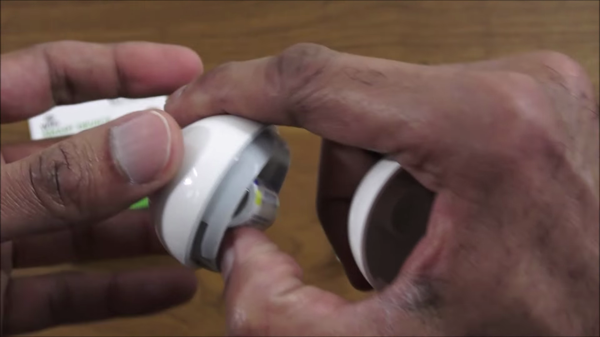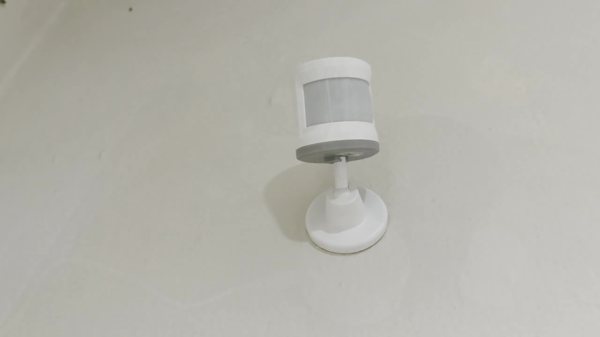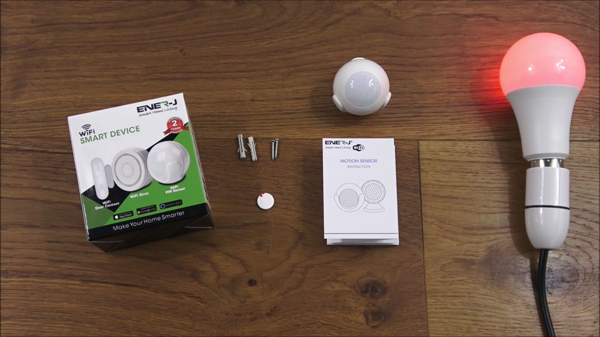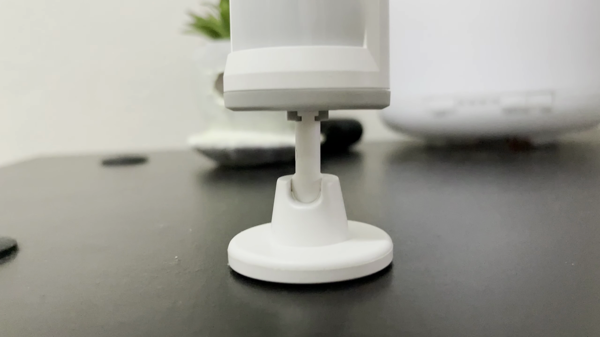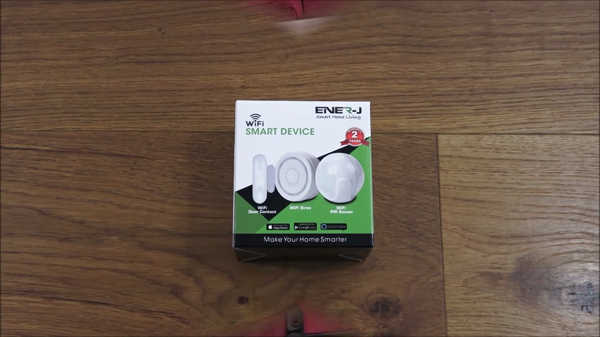Note: As an Amazon Associate I earn from qualifying purchases.
My review of the Wireless Smart PIR Motion Sensor: WiFi, TUYA App, No Hub (2024)
Introduction
I recently added the Gaoducash Wireless Smart PIR Motion Sensor to my smart home setup. As someone who values minimalism and the convenience of modern technology, I was looking for a product that would enhance security while keeping my living space uncluttered. This sensor promised to be a discreet addition to my home, offering the smart functionality and integration that I need without the bulk of additional equipment.
Specifications
| Property | Value | Property | Value |
|---|---|---|---|
| Brand | Gaoducash | Color | White |
| Power Source | Battery Powered | Item Weight | 89 Grams |
| Maximum Range | 39.37 Feet, 40 Feet, 12 Meters |
Photos
Click on photos to enlarge them:
Prices
Check prices of the Wireless Smart PIR Motion Sensor, WiFi, TUYA App, No Hub on:
Initial Impressions and Setup Experience
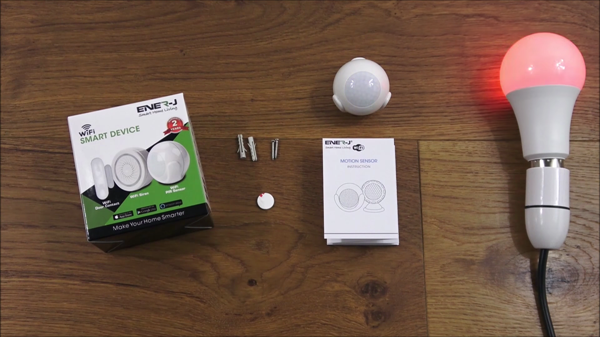
Upon unpacking the Gaoducash Wireless Smart PIR Motion Sensor, the device’s white chassis and compact design gave an immediate impression of a gadget that could blend seamlessly into the modern home. The tech specs hinted at an easy setup, but let’s look at how installation played out in reality.
Initial Setup:
Hardware installation: Mounting the sensor was straightforward, using the provided screws or alternatively, some sturdy double-sided tape.
App Connection: Connecting the Tuya Smart App was generally easy, requiring only a few attempts. Linking with Wi-Fi was straightforward.
Functionality Testing: The 110° detection angle and range seemed promising, and testing its responsiveness showed an acceptable lag, albeit a few seconds, which seems common in this category of device.
From a personal standpoint, I find the concept of a hub-less system appealing. Eliminating the need for additional hardware in favor of a minimalist setup is an allure, especially when considering the many devices today that require separate hubs, leading to unwanted clutter.
However, the small delay in motion detection may not suit all applications. Although insignificant to my specific use case, where a few seconds’ delay does not cause major inconvenience, it might be problematic for others.
Another drawback encountered during the first usage was the concern over battery life. The sensor relies on AAA batteries, which raises the issue of frequent replacements, particularly if the device is situated in a busy area. This contradicts the objective of a battery-free smart home element.
Despite some issues, the sensor’s range and day/night detection performed as expected. The absence of false alarms triggered by pets under 25KG was beneficial, suggesting the device has fine-tuned sensitivity.
The ability to link with other smart devices is a significant feature that enables numerous benefits. For instance, lights automatically turning on as you enter a room and linking with home security systems for enhanced security at night provide added convenience and security that are hard to ignore.
Moving forward, I remain optimistic, hoping the sensor’s real-world application lives up to its advertised prowess. The simplicity of the Tuya Smart App and the sensor’s clear potential for smart home integration sets the stage for a truly automated home experience—what the IoT is all about.
Living with the Motion Sensor Daily Functionality and Integration

Living with the wireless smart PIR motion sensor simplified my daily routine and provided insight into modern smart home devices. The installation process was uncomplicated, making the shift to a smarter home less intimidating.
Here are the essential aspects of my day:
Real-time alerts: I receive instant notifications on my app when there’s movement. This feature gives me peace of mind, as I’m informed when someone approaches my door or moves around in an empty room.
Pet-friendly feature: The sensor excludes alerts for pets under 25KG, ensuring genuine notifications that require attention.
Smart device integration: I find it convenient that my lights turn on automatically when motion is detected. This feature is particularly useful during late-night kitchen trips or upon entering the garage.
While considering the benefits of using a motion sensor, there are some disadvantages to be aware of:
Battery life: The battery may need replacement based on usage frequency. This isn’t a major issue but should be considered for those seeking a device with minimal maintenance.
Response time: There’s a slight lag in response, which sometimes means a brief wait in the dark before my lights kick in.
Signal drop-outs: On occasion, the sensor disconnects from Wi-Fi, requiring a manual reset. It’s infrequent, but it can be inconvenient.
Despite the minor issues, this sensor enhances my home’s automation, which aligns with my minimalist lifestyle. It reduces physical switching and provides monitoring for unattended spaces. The incorporation of modern technology simplifies daily tasks noticeably. This small device has a significant impact on my routine.
I’ve come to terms with the responsibilities of owning a smart home device. While I must manage battery replacements and occasional connection issues, the advantages outweigh these tasks. These include enhanced security, automated lighting, and the satisfaction of entering a well-lit room. The trade-offs are acceptable given these benefits.
Technological advancements in smart home devices, such as the PIR motion sensor, provide more efficient and convenient ways to live. I find these improvements genuinely enhance my daily interactions with my home ecosystem.
Battery Life and Maintenance Concerns

Managing battery life is essential when using wireless devices at home, especially those designed for security and convenience. The Gaoducash Wireless Smart PIR Motion Sensor offers advanced features and compatibility, but it raises significant maintenance concerns due to its battery needs.
What stands out for me is the claimed six-month battery life. Impressive on paper, but here are my practical thoughts:
- Battery Performance: Despite the six-month claim, I’ve found that heavy traffic areas can drain the batteries much quicker. Areas like living rooms or garages, which see frequent movement, can lead to more frequent battery replacements. This isn’t ideal for a minimalistic lifestyle that values ease and low maintenance.
- Replacement Costs: The added expense of 2*AAA batteries every few months adds up, not to mention the environmental considerations of discarding used ones. It’s quite the burden considering the initial hope for low-effort smart home integration.
- Real-World Use: The sensor does its job well when functioning. The ease of installation and the functionalities via the app are positives, but these are overshadowed if the unit isn’t powered.
Despite these drawbacks, there are some positive aspects to note. The motion sensor is easy to install and set up, and integrating it with my current home automation was a breeze. Linking the sensor to other smart devices turned my living space into a more reactive environment, and adjusting light settings based on movement was particularly useful.
Unfortunately, the short battery life creates a trap of inefficiency that significantly affects the user experience. Pursuing solutions such as rechargeable batteries or a wired power modification may offer temporary relief, but they can also lead us into the trap of sacrificing the product’s wireless convenience.
The integration of real-time alerts and free alarm history data in this sensor significantly enhances our daily lives. If we find a solution for the battery issue, these features will provide us with valuable benefits for security and peace of mind. However, there’s potential for improvement. Manufacturers could optimize the device’s power consumption or design an energy-efficient version in the future to further enhance its functionality.
While I relish the smart connectivity and the added security it offers, I would encourage prospective buyers to weigh the convenience against the upkeep. It’s a balance of smart tech versatility against practical maintenance for a streamlined home life.
Connectivity and Compatibility with Smart Home Ecosystems

In my quest for a smarter home and minimalist lifestyle, I’ve discovered that having a harmonious smart home setup is crucial. The Gaoducash WIFI motion sensor showcases both advantages and disadvantages in this area. Here’s what I observed:
Connectivity: This device syncs well with other smart home gadgets if you use a 2.4GHz Wi-Fi network. However, dual-band users must configure a separate channel, which can be time-consuming.
The compatibility of integrating with apps Tuya and Smart Life is a significant advantage, enhancing your home automation experience. This compatibility ensures seamless connectivity between these apps and your devices, enabling features such as motion-activated lights. By leveraging this compatibility, you can enjoy a more convenient and efficient home experience.
Despite these advantages, some disadvantages appeared:
Issues with Reliability: I’ve experienced occasional disconnections affecting my desired seamless smart home experience. Possible causes include network instability or signal interference, requiring careful attention.
Responsiveness: The delay in motion detection, although marginal, can sometimes detract from the fluidity of smart automations, which is not ideal for a minimalistic set-up where efficiency is key.
The balance favors the Gaoducash motion sensor due to its security enhancement and compatibility with other devices. I find its setup user-friendly and appreciate its functional versatility. However, it consumes a lot of power and experiences occasional connectivity issues.
For those interested in minimalist living and home automation using smart technology, this sensor provides an affordable starting point. While there’s still room for improvement with this emerging technology, the foundation for a more responsive and connected home is established.


